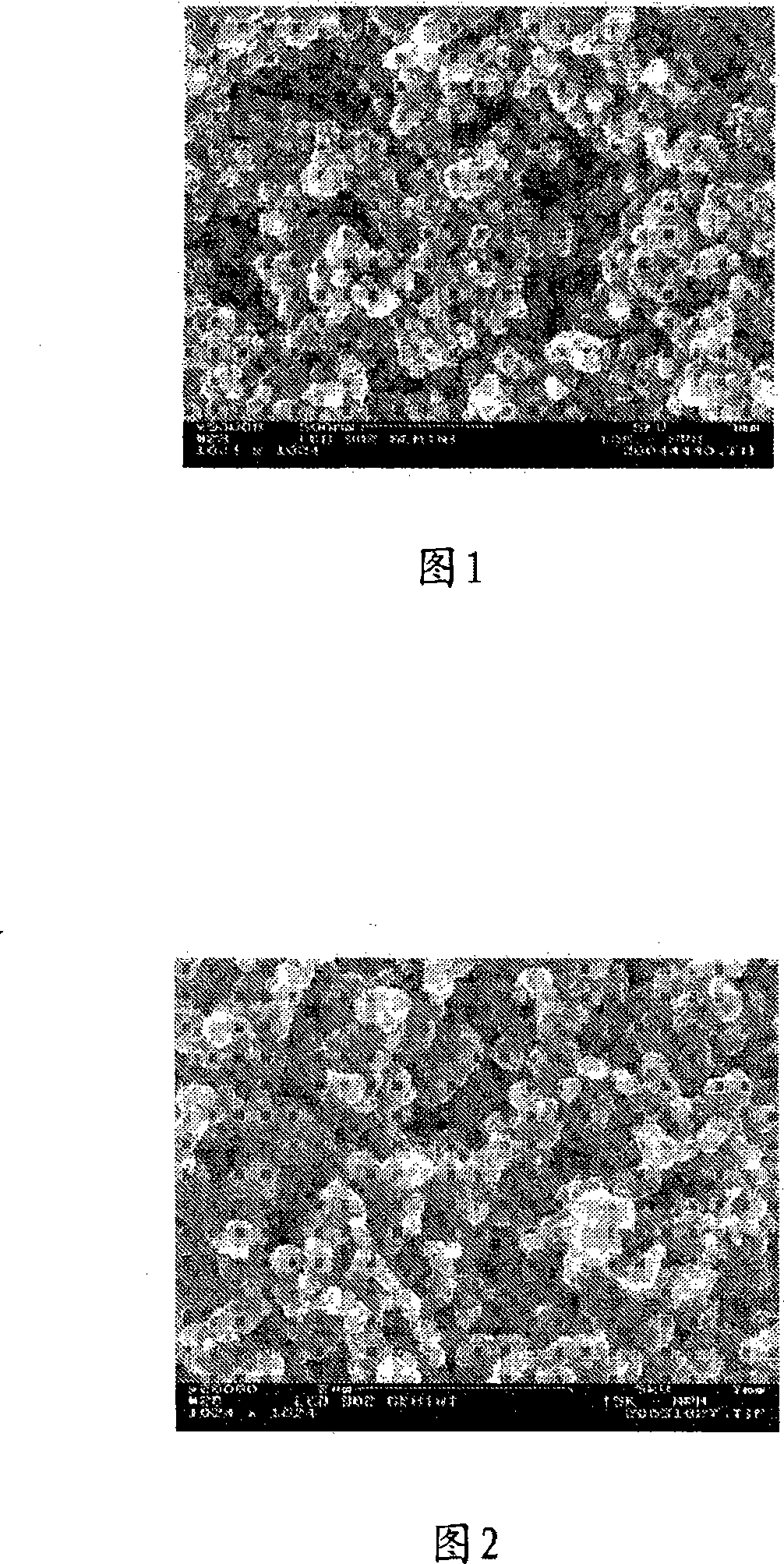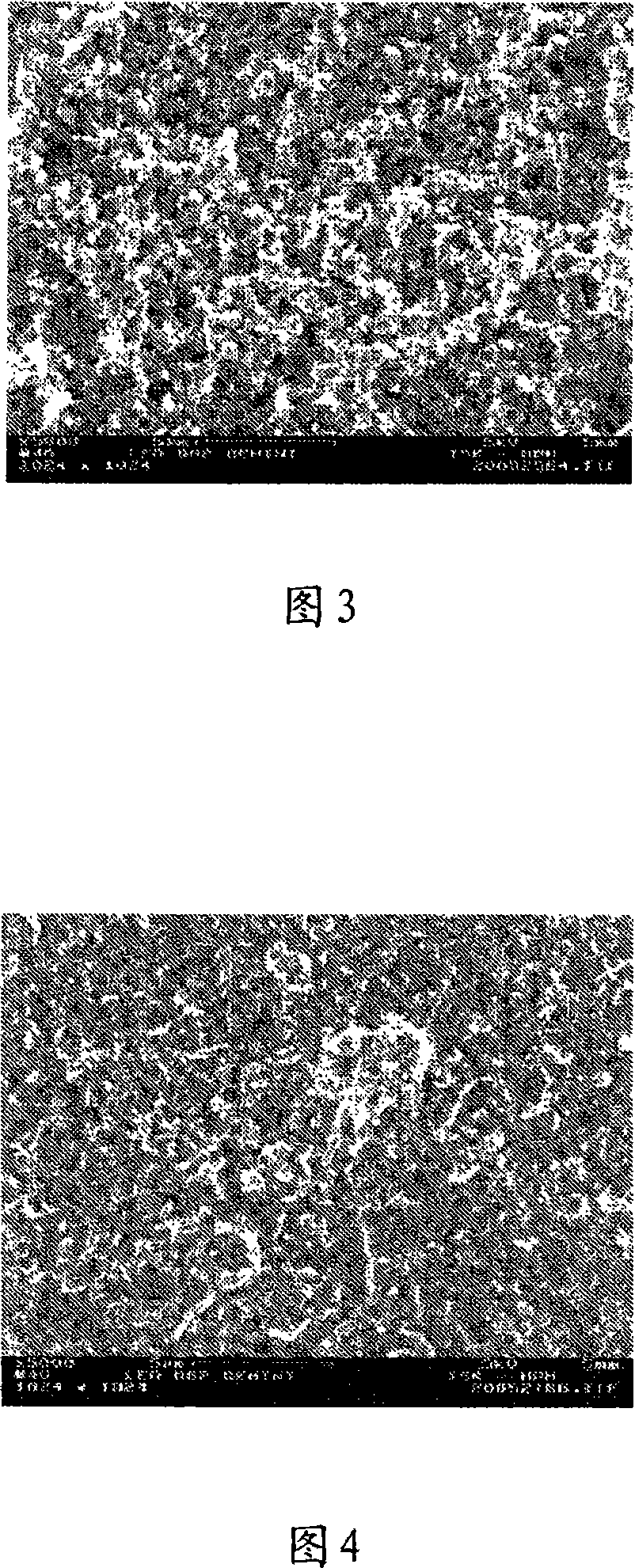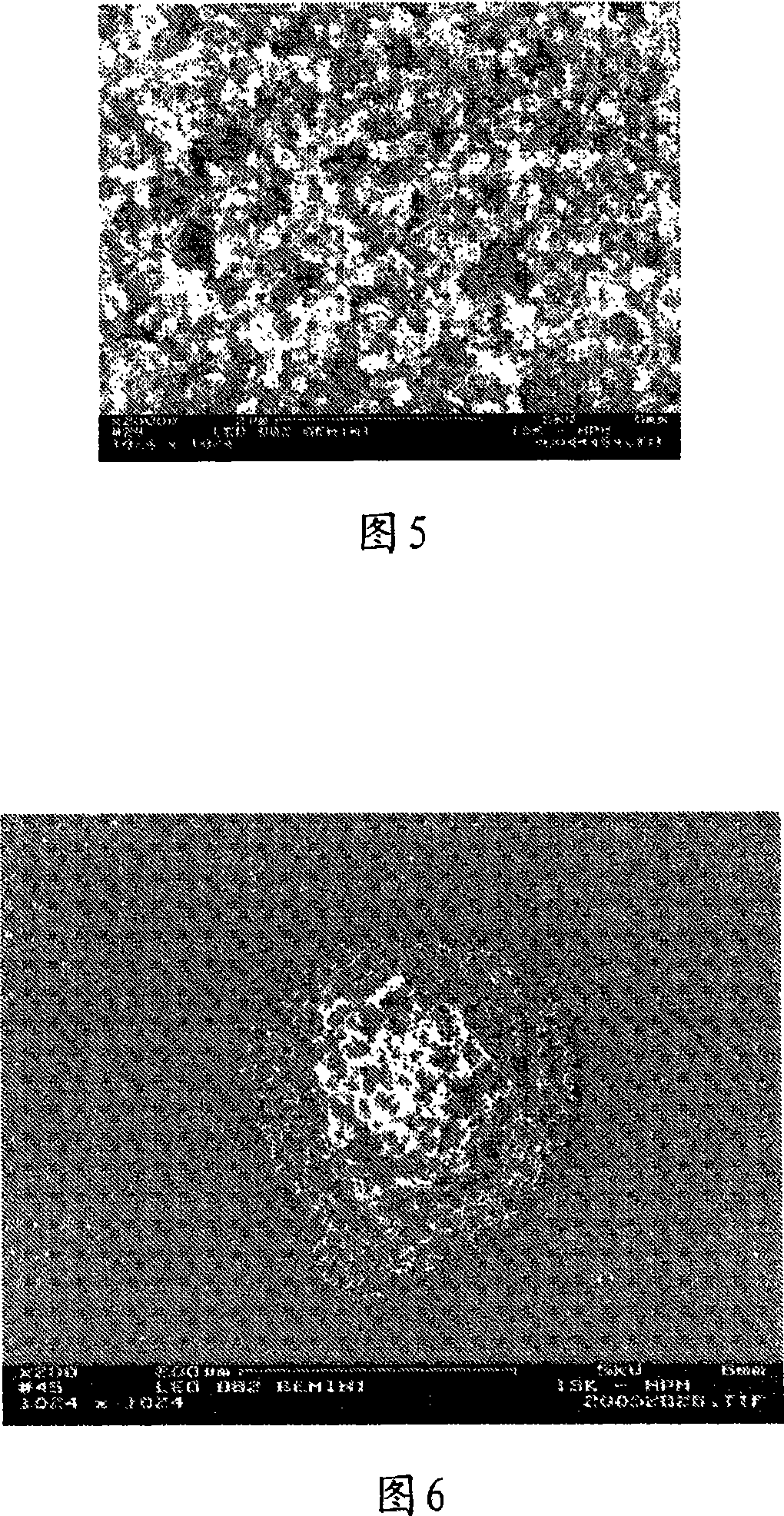Process for production of porous reticulated composite materials
A technology of porous composite materials and matrix materials, which is applied in the field of porous network composite materials and their preparation, and can solve the problems of inability to produce porous composite materials and high cost
- Summary
- Abstract
- Description
- Claims
- Application Information
AI Technical Summary
Problems solved by technology
Method used
Image
Examples
Embodiment 1
[0207] A homogeneous dispersion of soot, lamp black (Lamp-Black, Degussa, Germany) with a primary particle size of 90-120 nm and a phenoxy resin (Beckopox(R) EP 401, Cytec) was prepared. First, a mother liquor of methyl ethyl ketone (31 g), 3.1 g of Beckopox(R) EP 401 and 0.4 g of glycerol (crosslinker, SigmaAldrich) was prepared. By 1.65g lamp black and 1.65g dispersing additive (Disperbyk 2150, block copolymer solution in 2-methoxy-1-methylethyl acetate, Byk-Chemie, Germany) by adding part of methyl ethyl ketone / Beckopox EP 401 mother liquor to prepare soot paste. Subsequently, using Pentraulik The dissolver converts the paste into a dispersion by adding the rest of the mother liquor for 15 minutes to obtain a homogeneous dispersion. The dispersion has a total solids content of about 3.5%, determined by means of a moisture measuring device (Sartorius MA 50). The particle size distribution in the dispersion is D50 = 150 nm, determined by means of a laser diffractome...
Embodiment 2
[0210] A homogeneous dispersion of soot, lamp black (Degussa, Germany) with a primary particle size of 90-120 nm (Degussa, Germany) and phenoxy resin (Beckopox(R) EP 401, Cytec) was prepared as described in Example 1 . Instead of 1.65 g of lamp black, only 0.9 g of lamp black was used, and 0.75 g of a fullerene mixture (Nanom Mix, FCC) was used. The amounts of all other ingredients were the same as those used in Example 1 above. The resulting dispersion had a total solids content of about 3.4%, determined as described in Example 1. And the particle size distribution in the dispersion is D50 = 1 μm.
[0211] The resulting dispersion is 3.8g / m 2The average surface area weight is sprayed onto a steel substrate and dried with hot air for 2 minutes. The samples were heat treated as in Example 1 above. The resulting porous composite-coated steel substrates were examined using scanning electron microscopy. Figure 2 below shows a 20,000X magnified SEM photograph of the resulting ...
Embodiment 3
[0213] The samples prepared in Example 2 were treated at 35°C for 30 minutes in an acetone and ultrasonic bath. The sample was then dried in a conventional convection oven at 200°C for 2 hours. The SEM photograph in Figure 3 shows the sponge-like composite coating at 20,000X magnification.
PUM
| Property | Measurement | Unit |
|---|---|---|
| particle size | aaaaa | aaaaa |
| particle size | aaaaa | aaaaa |
| particle size | aaaaa | aaaaa |
Abstract
Description
Claims
Application Information
 Login to View More
Login to View More - R&D
- Intellectual Property
- Life Sciences
- Materials
- Tech Scout
- Unparalleled Data Quality
- Higher Quality Content
- 60% Fewer Hallucinations
Browse by: Latest US Patents, China's latest patents, Technical Efficacy Thesaurus, Application Domain, Technology Topic, Popular Technical Reports.
© 2025 PatSnap. All rights reserved.Legal|Privacy policy|Modern Slavery Act Transparency Statement|Sitemap|About US| Contact US: help@patsnap.com



